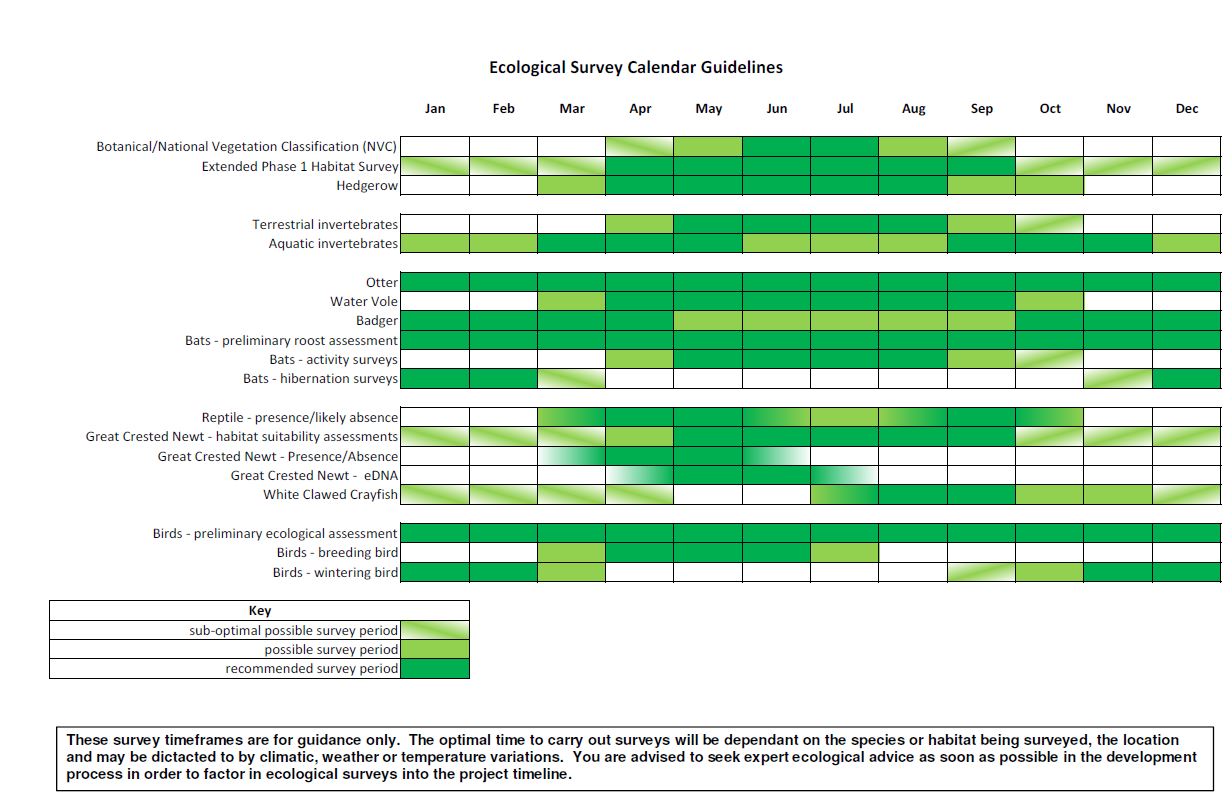Biodiversity describes all living things, the variety of life on earth, all plants, animals and the places that they live. The protection and enhancement of biodiversity is a key indicator and component of sustainable development. All protected species and habitats are covered within one of the following pieces of legislation:
- The Wildlife and Countryside Act 1981as amended
- The Countryside and Rights of Way Act 2000 (the CRoW Act 2000)
- The Conservation of Habitats and Species Regulations 2010
- The Badgers Act 1992 The Hedgerow Regulations 1997
- The Natural Environment and Rural Communities Act 2006
Differing procedures and processes will need to be followed depending on the piece of legislation concerned and the penalties for not complying with the legislation will vary accordingly. In addition to the legislation the Council takes a strong stance in the protection of non-statutory sites (LWS) and priority habitats and species.
Protected species are present throughout North Norfolk and they are the biodiversity issue most often encountered in the planning system. The Council takes a pragmatic approach to protected species issues and will only ask for surveys where it believes that there is a reasonable likelihood of a particular species being present.
Protected species are a material consideration when the Council is considering a development proposal. Full information about the presence of a protected species will be required before the planning application can be determined. In line with the NPPF, the council will expect developers to provide net gains for species and habitats when considering development proposals. Applicants are strongly advised to enter into pre-application discussions to ensure all the relevant information is provided before submitting an application. It is important to note that with many species, surveys can only be satisfactorily conducted at certain times of the year when the species is active. Early consultation is therefore important to avoid undue delays to applications arising as a result of the need to carry out surveys within the relevant seasons. Surveys should be carried out by a suitably qualified ecologist and provide sufficient detail to allow the Council to make informed decisions.
As a guide the Council would as a minimum require the following information to be provided in the survey:
- What species are involved?
- What is the population level likely to be affected by the proposal?
- What is the impact of the proposal on protected species?
- Is the impact necessary or acceptable?
- What can be done to mitigate the impact?
- Will a licence be required from Natural England?
"To protect and enhance biodiversity and geodiversity, plans should...promote the conservation, restoration and enhancement of priority habitats, ecological networks and the protection and recovery of priority species; and identify and pursue opportunities for securing measurable net gains for biodiversity". NPPF Para 174

Protected Species Table - Bats, Newts, Barn Owls, Badgers, Reptiles, Water Voles & Otters.

